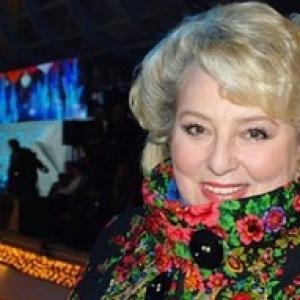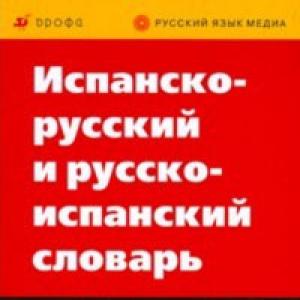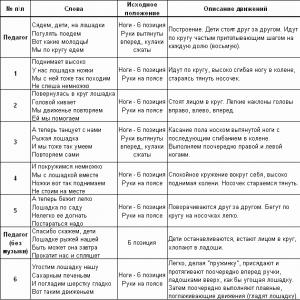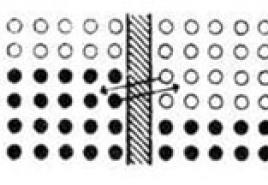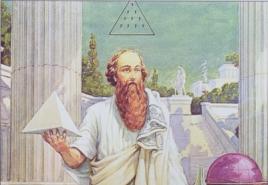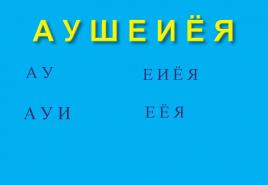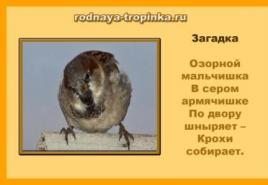What are books for children. What is reference literature? These are the main types of books for a child with their own hands
People study all their lives: at school, at an institute or technical school, while mastering a profession. One of the first and most important sources of knowledge is the book. A person turns to a fiction book to read an interesting story or novel, to enjoy a beautiful word, to see how the characters behave in a given situation. We turn to reference literature to get a quick answer to a teacher's question or task, to resolve a dispute with a friend. It helps us not only to write words correctly, to determine their meaning, but also to broaden our horizons, gives new information from various fields of science, technology, art, literature; develops our speech, attaches to the culture of the people. What is reference literature?
Reference literature These are books that give a short answer to any question. Publications that provide information on any question. Reference literature includes dictionaries, reference books, encyclopedias.
Reference literature features:
- selective reading (by task or interest)
- brevity
- the presence of an alphabet
- presence of pointers
- read randomly
When reading reference literature, you need to know:
- keyword (eagle)
- topic (biology or zoology, animals)
- alphabet
Use:
- content (table of contents)
- indexes (alphabetical-subject, nominal, geographical terms, chronological)
Types of reference literature
Dictionary
 What is a dictionary? It is a list of words or concepts in alphabetical order. Dictionaries are linguistic and encyclopedic.
What is a dictionary? It is a list of words or concepts in alphabetical order. Dictionaries are linguistic and encyclopedic.
We turn to language dictionaries if it is necessary to find out the meaning of a word, its origin, when translating a text from another language.
If we are interested in natural phenomena: floods, eclipses, earthquakes, or sports, science, technology, outstanding scientists, astronauts, then we look for information in encyclopedic dictionaries. Feature of branch encyclopedic dictionaries: - one topic or subject. For example, the "Encyclopedic Dictionary of a Young Biologist" is devoted to biology.
 There are also universal encyclopedic dictionaries.
There are also universal encyclopedic dictionaries.
They contain information on several branches of knowledge. For example, "Big Encyclopedic Dictionary"
Reference books

 Directory - a publication containing brief information about science, technology, production and human activity.
Directory - a publication containing brief information about science, technology, production and human activity.
Information in the directory is arranged in a certain order: alphabetically, thematically, chronologically. Many directories are provided with auxiliary indexes: nominal, alphabetical, subject, chronological and others, and may also have a list of additional literature for reading.
encyclopedias
Encyclopedia is a reference publication containing the most essential information on one or all branches of knowledge.
Encyclopedia for children Avanta+ publishing house.

 Universal multivolume encyclopedia.
Universal multivolume encyclopedia.
Published since 1993. The founders intended to create a completely new encyclopedia that would include the latest scientific developments, be presented in an accessible and fascinating language and cover even the most "difficult" topics. The encyclopedia is arranged according to the thematic principle, each volume is devoted to one topic. Within the volume there is also a thematic or chronological arrangement of the material. There is a reference and bibliographic apparatus to help, each volume has its own. It can be "index of names", "dictionary - index of terms", "subject-nominal index". And of course, in each volume - a list of additional literature. A lot of illustrative material: portraits of historical figures, drawings, and reproductions of paintings on the topic of the article. Now more than 50 books have been published as part of the Avanta+ Encyclopedia for Children series.
 The encyclopedia will become your main assistant on an exciting journey into the world of knowledge. She will tell about nature and man, technology and art, history and distant stars. Entertaining text is complemented by colorful illustrations, so you will be happy to leaf through these books, preparing for school and just looking for answers to thousands of questions that interest you.
The encyclopedia will become your main assistant on an exciting journey into the world of knowledge. She will tell about nature and man, technology and art, history and distant stars. Entertaining text is complemented by colorful illustrations, so you will be happy to leaf through these books, preparing for school and just looking for answers to thousands of questions that interest you.
If you know how to use reference literature to prepare a message, report or abstract, it is easy to get a good mark. Good luck with your studies!
What is reference literature? These are books that you can start reading from anywhere, even from the end, you can only look into them to find out the meaning of a particular word, or find out how it sounds and is written in a foreign language, or you can read a short story about some that historical event, city or famous person.
Reference publications differ from others in that the material in them is arranged in an order convenient for quick search (according to the "question - answer" principle).

Dictionary- a collection of words arranged in a certain order, with explanations designed to explain to the reader how a particular word is spelled or what it means. To date, there are many dictionaries, just listing all their varieties can take several pages. However, all their endless variety can be divided into two main types - linguistic and encyclopedic dictionaries.
Linguistics (linguistics) is the science that studies languages. Most often, explanatory articles are arranged in alphabetical order and contain only linguistic information.
In encyclopedic dictionaries, articles are arranged in alphabetical order, but they are more detailed, they talk about scientific concepts, terms, historical events, personalities, geography, etc.
There are spelling dictionaries that will show how a particular word is spelled; stress dictionaries that help you pronounce a particular word correctly; dictionaries of foreign words that explain to us the meaning of borrowed words. There are many translation dictionaries: Russian-English and English-Russian, Russian-French, Russian-Chinese, etc. And there are also dictionaries of synonyms, antonyms, epithets, special dictionaries for professionals - engineers, geologists, biologists, chemists, etc.

Encyclopedia This is a book from which you can learn about everything in the world! It is designed to explain to us what we do not know, and to clarify what we have a very vague idea about.
The purpose of any encyclopedia is to collect knowledge scattered around the world, contained in different books, studies, systematize them, check the reported information, indicate the source of information. The very word "Encyclopedia" in Greek means "learning in the whole range of knowledge."
Encyclopedias are universal and special. Universal encyclopedias are experts in all branches of human life and activity. These are the world-famous Brockhaus Encyclopedia, the Britannica Encyclopedia, the Great Soviet (Russian) Encyclopedia, etc. Special or branch encyclopedias provide more detailed information on individual branches of knowledge. There is a "Musical Encyclopedia", "Military Encyclopedia", "Russian Pedagogical Encyclopedia", "Historical Encyclopedia of Siberia" and many others.
Relatively recently, all encyclopedias were published in the form of books printed on paper, and today many encyclopedias exist in the form of CDs and in the virtual space of the Internet. One of the most famous Russian-language encyclopedias of that time was the electronic Big Encyclopedia of Cyril and Methodius, which appeared in 1996. It contains a huge amount of information from various fields of knowledge.
A popular virtual encyclopedia is Wikipedia. Any person can write an article for it, but he must adhere to certain principles for writing such an article, structure, and be sure to indicate the sources from which certain information was taken. All articles are checked, may be supplemented and changed. In addition to Wikipedia, there are other "free" encyclopedias on the Internet, but their level of popularity is not so high.

Directory is a publication that contains a set of information covering a specific area of knowledge, activity, topic, etc., and is of an applied, practical nature. Modern directories are desktop, portable, pocket, wall. They are supplied with drawings, drawings, diagrams, tables, photographs and other illustrations. According to the volume of information, they are divided into complex (a wide range of scientific and applied issues) and specialized (the subject is limited). There are scientific, industrial, educational, popular, household, as well as systematic, alphabetical, numbered, chronological, single-volume and multi-volume reference books.
And how to learn to use the dictionary and encyclopedia? There are two ways to build them: alphabetical and systematic.
Alphabetical arrangement is usually used in various dictionaries, as well as extensive (multi-volume) encyclopedias. In them, articles are arranged in alphabetical order, in accordance with the name of a particular subject (phenomenon, term, etc.).
For thematic encyclopedias, dictionaries and reference books, the system location is more convenient. This is how, for example, “Encyclopedia for Children. Avanta+". The encyclopedia is arranged according to the thematic principle, each volume is devoted to one topic (some "voluminous" volumes (for example, "Art") are published in several books).
REMEMBER!
Reference literature features:
- brevity of information;
- read randomly;
- reading on assignment or interest;
- having an alphabet.
Rules for using reference literature:
- determine what topic your question relates to;
- know the keyword, what you are looking for;
- do not forget that the alphabet is the main one in the reference literature, that is, all information is arranged alphabetically;
- use the content and pointers - these are your faithful assistants.
Reference literature also includes calendars, guidebooks, collections of winged words, aphorisms, sayings, and literary quotations.
If you know how to use reference literature to prepare a message, report or abstract, it is easy to get a good mark. Good luck with your studies!
Do you want to know more? Read here:
- All knowledge of the world / [ed. V. Polyakov; ed. D. Zykov, Yu. Guller] // Children's Encyclopedia. - 2014. - No. 5. - 56 p.
- What is reference literature
The first three years of a child's life are not only the most interesting for his parents, but also the most responsible. At first, the baby requires only the satisfaction of his natural needs, but very soon he turns into a real explorer. From 1 to 3 years old, a child learns a lot of new things, and most importantly, learns to speak. That is why adults need to pay attention to expanding the vocabulary of their child and the correct construction of sentences. This lesson is not easy enough, but educational books for children 2-3 years old can make it much easier for parents to achieve this goal.
What can a child achieve by the age of 3 with the help of books?
With the help of a variety of educational books, a child by the age of 3 will be able to learn:
- In detail, memorize various information obtained both from books and in other ways, for example, while walking in the park, in the forest or relaxing at sea.
- Learn animals, plants, fruits, vegetables and more.
- Imagine and think creatively. It is important to note that in order to develop this quality, the child must not only be interested in books, but also discuss their contents with adults.
- Describe your actions.
- Speak in grammatically correct sentences and use words and expressions correctly.
- Distinguish colors.
- Behave correctly in different situations.
- Love books.
- Read and count. Of course, these skills cannot yet be called full-fledged, but they will be the first step in the formation of the mentioned skills in the child.
The skills and abilities listed above are just a few of those that a child can get through developing books. From them, the baby can draw a wide variety of knowledge - it all depends on the content of a particular book.

Types of educational books for children up to 3 years.
In modern bookstores and children's toys, educational books for babies under 3 years old are presented in a huge assortment. In this connection, it is very difficult for parents to choose the right option for their baby. However, the choice of educational literature for children under 3 years of age will be much easier if the parent knows what type this or that book belongs to and what it is. Conventionally, all children's books can be combined into several of the following groups:
- Bathing books.
- Books with fairy tales.
- Sound books.
Each developmental book belonging to a particular group has its own distinctive features, as well as the role that it can play in the development of a child from 0 to 3 years old. This will be discussed further.

Picture books with titles.
The pages of such books can depict plants, animals, clothes, fruits, vegetables, furniture and much more. Their main advantage is that the pictures are large, clearly drawn and as realistic as possible. Such books can be printed both on cardboard and plain paper.
With their help, a child from 1 to 2 years old will be able to significantly expand their vocabulary. It is also very convenient to learn letters from such publications, since most of the words in them are short and written in large print. In addition, on the pages of such books, cubes with letters that make up a particular word are often encrypted.
They can be made in the form of an animal or any geometric shape (circle, rectangle, square), but in any case, all their corners are rounded, which ensures completely safe contact of the child with them.
Books-donuts, first of all, are distinguished by a unique design - for the manufacture of their pages, environmentally friendly, soft and light materials are used, as well as durable high-quality cardboard. The pages of these books "stick" to each other, as if magnetized.

The contents of this literature can be presented in the form of short poems or fairy tales. Their obligatory elements are bright and large illustrations. Children from 1 to 2 years old like puffy books for their lightness, as well as the fact that their pages are easily turned over.
Among the advantages of donut books, it is also worth noting the durability of their service. The spine of these educational books is made of flexible material that allows you to unfold it the way your baby wants. In addition, the child, without harm to himself and the book, can gnaw it, throw it and perform any other actions.
Bathing books.

Bathing books consist of soft oilcloth pages with various images, and sometimes words or short text. In addition, soft books can be equipped with a squeaker or other interesting elements. Some publications change the color of the pages depending on the temperature, which allows the child to learn to distinguish colors.
For the manufacture of bathing books, only environmentally friendly and safe materials for the baby are used. Thanks to bathing books, a child of 2-3 years old will even spend time in the bathroom for the benefit of his development.

Their pages are made of thick multi-layered cardboard. As a rule, such books are presented in the form of various animals. The content of the publication depends on its form. For example, if a book is made in the form of a cat, then its pages contain nursery rhymes or other information about this animal, as well as its colorful pictures. With the help of such educational books, children 2-3 years old will be able to learn a lot of interesting things about different animals, as well as memorize a few new rhymes. In addition, such books can be presented in the form of letters or numbers, which will allow the child to take the first steps towards a full-fledged education.
Books with valves, rattles, latches and other moving elements.
Laminated pages of such publications are made of several layers of thick cardboard. Inside such books can contain a wide variety of useful information for children from 0 to 3 years old. These can be the names of various pets with a description of what they eat and what benefits they bring.
Often in such books you can find the names of the parts of the child's body and other, no less useful information for the baby, who is just starting to get acquainted with the world around him. But the book keeps the child's attention not only due to interesting content, but also additional elements that you can play with.
Books with fairy tales.

For children under 3 years old, the pages of such books should be quite dense - firstly, a baby can cut a finger on a thin page, and secondly, their service life for a child will be very short. However, publications are very different and their choice depends solely on the wishes of the parent.
When buying books with fairy tales, it is important to pay attention that their pages have large illustrations and not too much text, otherwise it will be difficult for the child to understand what is being said. In addition, when buying these books, remember that the child will not be able to read them on his own, he will need the help of an adult.
Sound books.

The child learns to perceive the world not only visually, but also by ear, and books with sounds can help him in this. The pages of such books consist of several layers of thick cardboard, which ensures its long service life. Inside the book, animals, musical instruments, natural phenomena can be depicted, and buttons are mounted nearby, after pressing which a certain sound is played, depending on the picture shown on the page.
Books with poems by famous poets.
Despite the fact that a child under 3 years old is not yet able to understand the skill of writing many children's poems, at least one such book should be in the baby's home library. Do not force your child to learn large poems right away, but read them to him regularly and, perhaps, he will soon remember them.

For the manufacture of this book, fabrics of various textures, colors and densities are used, as well as accessories - buttons, zippers, buttons, laces, etc. This book does not remind us of a classic edition, but its positive impact on the development of a child from 0 to 3 years old cannot be overestimated . With the help of a fabric book, the baby develops fine motor skills, he learns to distinguish materials by touch. In addition, the child in this way gets acquainted with various objects, plants and animals that are in his book.
As you can see, today there are a huge number of opportunities to accustom a child to the idea that a book is a man's best friend. And you can do this, starting from the first year of a baby's life. Despite the fact that the first children's books may seem primitive to an adult, they have a huge positive impact on a child's development.
You can learn more about the range in the catalog of our online store.
Cute and funny children's books, so bright and colorful, interesting and informative. They are not only able to provide fun leisure for the whole family, but also provide all possible assistance in the development of the little reader.
Today, dear friends, I want to introduce you to our books, which we have been reading since birth, and also draw your attention to those important points when choosing books for a one-year-old baby and a baby even younger.
When a child is small and does not take an active role in reading, but only enthusiastically listens to how mom or dad reads to him, books, of course, are suitable for any. But as the child grows up, certain requirements for literature also arise, since the desire to touch everything, pull it on yourself, try it on the tooth, and sometimes break it when you wake up, will speak in the child for quite a long time.
So, books that are not intended for testing by a child can be quickly written off and sent to the forefathers ahead of time.
So, what should be children's books for the little ones?
What to look for when choosing a children's book for the little ones
The fact is that buying books with thin pages and paperback for a small child is a thankless task. The pages will immediately be torn apart, despite all your attempts to keep them intact (although this may not happen immediately, it all depends on the temperament of the baby).
It is too early for toddlers to also buy books with long rhymes or texts. Small letters will not be able to arouse interest in the child, and long mother's speeches will not hold the attention of an active little researcher for a long time.
Therefore, when choosing a book for a child under the age of one and a half, one should pay attention to the availability of the book:
- thick pages;
- Strong cover and hardcover;
- Bright and colorful pictures;
- Short and rhythmic rhymes or texts;
- Chips that attract the attention of the baby, for example: a figured book, made in the form of its main character, a music book, a foam book, a book with toys in the middle, a book with a squeaker, books with all sorts of surprises, etc.
Below, dear readers, I will give an overview of our not quite ordinary children's books (in the sense that they are not paper), I hope it will be useful for you, and you will like the books.
Foam books
 book pages
book pages I don't even know the name of the material from which these books are made. This is something like foam that cannot be broken off, gnawed or eaten. The book is very light but firm, the pages are thick and very easy to turn with little fingers.
First of all, these books attracted my attention by the fact that they are made in the form of animals - the main characters, about which the books tell. This solution seemed to me beneficial, and I thought that my child would like it. I made the right decision, my son is delighted, now these are one of our favorite books.
I also really liked that these books cannot be eaten or torn, for us this is a very big book advantage 🙂
rubber books
 Bathing books
Bathing books Books, . They are very diverse, with squeakers, curly ones, with text or just pictures, in general, for every taste.
fabric books
 Our book is a house
Our book is a house I want to dwell separately on the description of these books, since they are not so much books as educational toys.
With the help of such books, you can invent all kinds of fairy tales with your baby, including developing them, making the journey of the main character through the pages of the book. Such books are also absolutely safe, they cannot be torn and eaten.
If a mother knows how to sew, then without any problems she can sew such an educational book for the baby herself, and, believe me, it will become the best book for him! The main thing is the mother's desire and the availability of her time and strength.
Here is our book. The main character, a soft Velcro duck, travels through a book-house, visits the mistress of the house, the mouse, and has breakfast in the kitchen of Aunt Sheep. Each time the story can be different, in general, the book gives an unlimited field for the imagination of mother and child.
On this, perhaps, everything for today, dear friends.
What are your kids favorite books? Maybe there are some unusual ones that I did not mention? I will be glad to your comments.
Have a great mood, happy reading and Happy Holidays!!!

